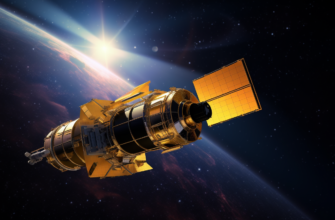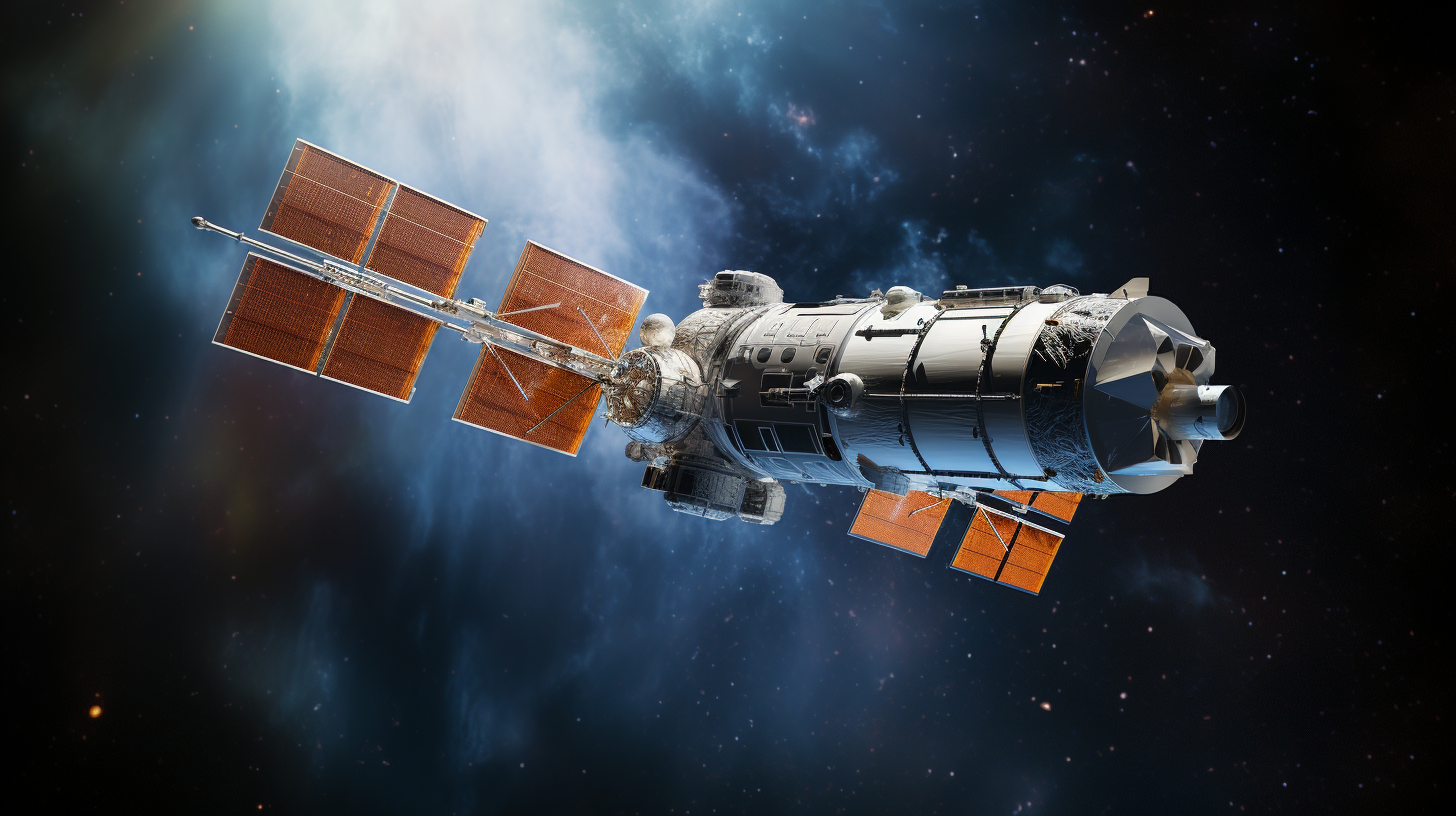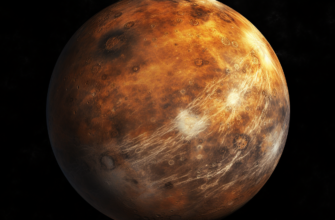The Kepler space telescope represents a pivotal achievement in humanity’s quest to understand our place in the cosmos. Launched by NASA in 2009, Kepler discovered thousands of exoplanets around distant stars, proving that our solar system is just one among a vast multitude of planetary systems across the galaxy.
- Overview of Kepler’s Mission
- Kepler’s Groundbreaking Discoveries
- How Kepler Worked
- Selecting Kepler’s Target Stars
- Planet-Hunting with Transit Photometry
- Key Instrumentation on Kepler
- Kepler’s Photometer and Camera System
- Following Kepler’s Development
- Kepler’s Groundbreaking Discoveries
- Notable Kepler Discoveries
- Contributions to Exoplanet Science
- Kepler’s Divining Rod for Exoplanet Discovery
- Analyzing Kepler Data with Follow-Up Observations
- Behind Kepler’s Revolutionary Contributions
- Kepler’s Legacy and Lasting Impact
- Limitations and Challenges
- Mechanical Failures and Kepler’s Demise
- Kepler’s Continuing Impact on Exoplanet Science
- Kepler’s Exoplanet Bounty
- The Future of Exoplanet Missions
- Conclusion
Overview of Kepler’s Mission
Kepler was designed to survey a portion of the Milky Way galaxy in order to accomplish three main scientific objectives:
- Determine how common planets are around Sun-like stars
- Estimate the number of terrestrial and larger planets in the habitable zone of Sun-like stars
- Estimate the distributions of planet size and orbital spacing
To accomplish this, Kepler stared at a single patch of sky, monitoring the brightness of over 150,000 stars simultaneously. By detecting tiny dips in a star’s brightness caused by a transiting planet, Kepler could identify exoplanet candidates for further study.
Kepler’s Groundbreaking Discoveries
During its initial 4-year mission, Kepler provided a wealth of unprecedented discoveries:
- Over 2,300 confirmed exoplanets – This revealed that planets are more common than stars in our galaxy. Extrapolating Kepler’s planet candidates suggests there could be billions of planets just in the Milky Way.
- Hundreds of multi-planet systems – Kepler found systems with up to 7 planets orbiting a single star, with both small rocky planets and large gaseous planets.
- Earth-size planets in the habitable zone – Kepler found a number of exoplanet candidates close in size to Earth orbiting in their star’s habitable zone, where liquid water could exist on a rocky planet’s surface. This suggests habitable worlds may be common.
- Super-Earths and mini-Neptunes – Kepler revealed a whole new class of exoplanets, unlike anything found in our solar system, with sizes between Earth and Neptune. How these mysterious worlds form remains an open question.
How Kepler Worked
Kepler utilized a 0.95 meter Schmidt telescope with an ultra-sensitive photometer to continuously monitor the brightness of over 150,000 main sequence stars in a fixed field of view.
- Precision photometry – By detecting tiny dips in brightness as planets transit their host stars, Kepler could find exoplanets with incredible precision. The telescope was sensitive to changes in brightness of only 20 parts per million – like detecting a flea crawling across a car headlight from 100 miles away!
- Stable space platform – Kepler orbited the sun, not Earth, allowing it to stay extremely still and achieve consistent photometry without atmospheric interference.
- Large dataset – Kepler observed a large sample size of stars, allowing it to make statistical determinations about planet populations. Larger samples provide greater certainty in extrapolating Kepler’s finds to the galaxy overall.

The Kepler space telescope
Selecting Kepler’s Target Stars
Kepler monitored target stars within a fixed 115 square degree field of view in the Cygnus constellation. Target selection was a key factor in the mission’s success.
Kepler’s target stars needed to be:
- Main sequence stars like the Sun (F, G or K spectral type)
- Bright enough for Kepler to obtain quality photometry
- Not have excessive stellar noise like active flares
- Have a high enough galactic latitude to minimize background stars
This led to an initial target list of over 400,000 stars, later narrowed to ~156,000 optimal targets. Most were between 600-3000 lightyears from Earth.
Planet-Hunting with Transit Photometry
Kepler discovered planets using a technique called transit photometry:
- It measured the brightness of target stars over time
- When a planet passed in front of its star, it caused a slight, regular dip in brightness
- The tiny dip signaled a planetary transit
- Repeated transits indicated an orbiting exoplanet

An exoplanet transiting its host star causes a slight dip in brightness
Advantages of transit photometry:
- Allows finding many exoplanets with a single instrument
- Planet radius can be calculated from the transit depth
- Orbital period is determined from the transit interval
- Planet mass can be estimated knowing the star mass
Follow-up observations are needed to confirm exoplanet candidates by validating their mass.
Key Instrumentation on Kepler
Kepler utilized precision instrumentation tailored to detect tiny dips in starlight:
- Telescope – A specialized 0.95m Schmidt telescope with a wide 105 square degree field of view. Extremely stable construction.
- Photometer – Contained the key electronics and CCD sensors to detect changes in star brightness down to 20 ppm.
- Spacecraft – Provided power, communications, propulsion and a stabilized platform. Oriented to keep Kepler’s field of view motionless.
- Data pipeline – Software for identifying transit events in the vast photometric datasets from Kepler’s camera.
This robust instrumentation allowed Kepler to continuously monitor over 100,000 stars simultaneously.
Kepler’s Photometer and Camera System
At the heart of Kepler was its ultra-precise photometer containing a camera system with 42 CCD detectors. This instrument performed the essential function of detecting tiny dips in star brightness caused by transits.
Some key facts about Kepler’s photometer:
- Monitored 170,000 pixels simultaneously, one per target star
- Recorded a brightness measurement for each target star every 6 seconds
- CCD sensors for detecting brightness changes as small as 20 ppm
- Wide 105 square degree field of view
- Could detect Earth-size planet transits around Sun-like stars
This exquisitely sensitive photometer delivered transformative results for exoplanet science.
Following Kepler’s Development
The Kepler concept was proposed in 1992 as an efficient way to detect transiting exoplanets. After years of technology development, the mission slowly became a reality:
- 1992 – Kepler concept first proposed
- 2001 – Kepler accepted as Discovery-class NASA mission
- 2006 – Photometer completed and tested
- 2007 – Spacecraft assembly finished
- 2009 – Kepler successfully launched on March 6
- 2013 – Second Kepler mission approved after reaction wheel failures
It took over 15 years from the initial proposal to launch this pioneering telescope!
Kepler’s Groundbreaking Discoveries
Kepler’s four years of continuous observations led to groundbreaking discoveries about exoplanets:
- Exoplanets are ubiquitous – Kepler found over 4,000 exoplanet candidates and 2,300 confirmed exoplanets, proving our galaxy hosts billions of planets
- Small planets are common – Many exoplanets smaller than Neptune were found, a new class not seen in our solar system
- Habitable worlds may abound – Kepler discovered Earth-size planets in habitable zones where liquid water could exist on a surface, highlighting the potential for extraterrestrial life
- Diverse planetary systems – Systems with multiple planets on compact orbits, unlike our solar system, showed the diversity of planet configurations
- Improved planet formation theories – Kepler’s treasure trove of discoveries have allowed theorists to improve models of how planets form and evolve over time
These revolutionary findings opened an expansive new chapter in humanity’s quest to understand worlds beyond our solar system.
Notable Kepler Discoveries
Kepler made many notable exoplanet discoveries, including:
- Kepler-16b – One of the first confirmed circumbinary planets, orbiting two stars
- Kepler-186f – The first Earth-size planet in a habitable zone around a small star
- Kepler-452b – An Earth-size world in a habitable orbit around a Sun-like star, nicknamed “Earth’s cousin”
- Kepler-90 – A system with 8 planets, tying our own solar system for having the most known planets
- Kepler-1625b – An exomoon candidate, which may be the first moon detected beyond our solar system
These memorable finds represent just a sampling of Kepler’s prolific discoveries.
Contributions to Exoplanet Science
Kepler revolutionized the study of worlds beyond our solar system in multiple ways:
- Proved exoplanets are ubiquitous – Kepler found thousands of exoplanet candidates around other stars, showing planets are common.
- Enabled statistical studies – With a robust sampling of exoplanet populations, scientists can now study distributions of planet size, orbital spacing, multiplanet systems, and occurrences rates.
- Discovered new exoplanet classes – Kepler found entirely new types of planets, including many mid-size worlds between Earth and Neptune with no solar system analogue.
- Found exoplanet candidates around many star types – Kepler detected planets around not just Sun-like stars, but also smaller red dwarf stars and evolved stars.
- Yielded targets for follow-up study – Kepler’s exoplanet catalog provides prime targets for current and future telescopes to perform detailed characterizations by measuring exoplanet masses, atmospheres, and potential biosignatures.
These many contributions fundamentally altered our perspective of planets beyond our tiny corner of the cosmos.
Kepler’s Divining Rod for Exoplanet Discovery
Kepler confirmed the existence of worlds beyond our solar system that had long been conjectured. It provided the first complete census of exoplanets around Sun-like stars.
Like a divining rod for exploration, Kepler pointed the way toward some of humanity’s most enduring questions: How common is life in the universe? How unique or ordinary is Earth? Do inhabited worlds orbit stars beyond the Sun?
While Kepler could not answer these ultimate questions, its pioneering discoveries set the stage for future efforts to explore potentially habitable worlds. With Kepler’s guidance, the search for life elsewhere took an epic leap forward.
Analyzing Kepler Data with Follow-Up Observations
Kepler detected exoplanet candidates by looking for transit signals. But follow-up observations using other telescopes were crucial for confirming bona fide exoplanets.
Common follow-up observation strategies included:
- Radial velocity – Measuring star wobble via Doppler shift to validate exoplanets and determine mass
- Transit timing variations – Detecting timing differences in transits due to gravitational interactions between planets
- Host star characterization – Observe exoplanet host stars to better constrain planet properties based on the star
- Ground-based photometry – Use large telescopes to rule out false positive transit detections
- Direct imaging – Directly image and spectroscopically analyze larger, widely-separated exoplanets
Kepler handed off its top exoplanet candidates to leading observatories worldwide, enabling confirmation through these complementary techniques.
Behind Kepler’s Revolutionary Contributions
Kepler’s resounding success relied on several key factors:
- Ultra-precise photometry – Kepler’s instruments could detect minuscule brightness changes of 0.002% to find Earth-size planet transits.
- Large sample size – Kepler monitored ~156,000 stars simultaneously, detecting rare exoplanet events through sheer numbers.
- Stable space platform – Kepler’s heliocentric orbit allowed extremely stable photometry, free from atmospheric interference.
- State-of-the-art detectors – Cutting-edge CCD sensors enabled Kepler’s ultra-precise photometry.
- Sophisticated data pipeline – Algorithms combed Kepler’s massive datasets for tiny transit signals buried in noise.
- Synergy with other telescopes – Ground-based observatories provided crucial follow-up to validate Kepler’s candidates.
Thanks to these essential assets, Kepler thoroughly transformed our understanding of planets beyond our solar system.
Kepler’s Legacy and Lasting Impact
While Kepler’s mission ended in 2018, its legacy continues on through ongoing research and future missions influenced by its success, including:
- Provided targets for further study – Kepler’s expansive candidate list gives astronomers abundant targets for current and future telescopes to characterize exoplanet atmospheres and investigate potential biosignatures.
- Inspired future transit missions – Kepler paved the way for upcoming transit surveys like PLATO, ARIEL, and TESS which will build on its census of exoplanet populations.
- Revolutionized exoplanet science – Kepler single-handedly transformed the burgeoning field of exoplanet science into a mature discipline grounded in statistical results.
- Enabled exoplanet population research – With thousands of discoveries across a range of planetary sizes and orbits, Kepler enables robust statistical studies to understand exoplanet distributions, frequencies, architectures, and occurrence rates.
- Uncovered planet diversity – Kepler proved planetary systems can be strikingly different than our own, with hot Jupiters, compact multiplanet systems, and a profusion of mid-size worlds.
Kepler’s lasting contributions sealed its legacy as history’s most prolific planet-hunter.
Limitations and Challenges
Despite its resounding successes, several factors limited Kepler’s planet-finding capabilities:
- Limited field of view – Kepler observed a tiny patch covering just 0.25% of the sky, missing many potential exoplanet systems.
- Focused on G-type stars – Kepler preferentially observed Sun-like G-dwarf stars, missing planets around many M-dwarf stars.
- Orbital constraints – Kepler was best suited to finding exoplanets with short orbital periods, limiting ground-based follow-up for longer-period planets.
- No mass measurements – Kepler could only determine exoplanet radius and orbital periods, not masses or densities.
- Further characterization difficult – Kepler’s distant target stars make follow-up atmospheric characterization challenging.
- Limited mission duration – Mechanical failures cut Kepler’s prime mission short after just 4 years.
Despite these hurdles, Kepler reshaped our cosmic perspective forever.
Mechanical Failures and Kepler’s Demise
In 2013, mechanical failures ended Kepler’s primary mission, although it continued science operations in a more limited mode:
- Failed reaction wheels – Kepler relied on 4 reaction wheels to orient itself, but 2 wheels failed, compromising pointing ability.
- Switched to K2 mission – With limited pointing, Kepler began a new K2 mission observing different fields for ~80 days each.
- Alternate pointing methods – Creatively using sunlight pressure and thrusters to stabilize the spacecraft opened up new observing opportunities.
- Low fuel limits – Carrying little extra fuel, Kepler had a limited lifetime in K2 mode before depleting its fuel supply.
- Mission ends – In October 2018, with its fuel tapped out, NASA announced the end of Kepler’s science operations.
Despite an early demise, Kepler singlehandedly jumpstarted the exoplanet revolution.
Kepler’s Continuing Impact on Exoplanet Science
Although Kepler’s mission ended in 2018, analysis of its data continues to uncover new findings:
- Identifying more exoplanets – As of late 2022, ~2,300 exoplanets have been confirmed from Kepler data, with more still being verified.
- Improving planet occurrence rates – Kepler’s large dataset enables ever more accurate measurements of how frequent planets of various sizes and orbits occur around different stars.
- Informing theoretic modeling – Models of planet formation and evolution are refined based on Kepler’s real-world data on the prevalence and attributes of exoplanet populations.
- Enabling population studies – With a survey of thousands of exoplanet systems, scientists can conduct robust statistical studies of distributions and correlations between planet properties and orbital configurations.
- Targeting future observations – Kepler’s mother lode of exoplanet candidates provides high-priority targets for upcoming missions to further characterize potentially habitable worlds.
Though Kepler has ceased operations, its collections continues to generate new insights that direct the search for life in the universe.
Kepler’s Exoplanet Bounty
Over the course of its mission, Kepler discovered a bountiful treasure trove of worlds:
- 2,662 confirmed exoplanets as of Nov 2022
- Over 4,000 exoplanet candidates identified
- Worlds ranging in size from smaller than Earth to larger than Jupiter
- Diverse exoplanets including hot Jupiters, super-Earths, sub-Neptunes, circumbinary planets, and many multiplanet systems
- Hundreds of Earth-sized exoplanets and dozens of potentially habitable, Earth-sized worlds
This veritable cornucopia of planets fundamentally changed our notion of how abundant and diverse planets really are throughout the cosmos.
The Future of Exoplanet Missions
Kepler ushered in a renaissance in exoplanet science. Upcoming space missions will build on Kepler’s pioneering legacy:
- TESS – An all-sky transit survey to identify planets around nearby bright stars for follow-up characterization
- JWST – The James Webb Space Telescope will spectroscopically study the atmospheres of exoplanets
- PLATO – A European Space Agency mission launching in 2026 to discover and characterize rocky exoplanets
- ARIEL – A space telescope launching in 2029 to survey exoplanet atmospheres using transit spectroscopy
- HabEx & LUVOIR – Two proposed large, next-generation space telescopes with the capability to directly image exoplanets and search for biosignatures
Kepler provided the foundation and inspiration for this flourishing new phase in humanity’s age-old quest to understand life in the universe.
Conclusion
The Kepler space telescope revolutionized our understanding of exoplanets, proving that worlds beyond our solar system are ubiquitous. Its pioneering transit detections revealed an extraordinary diversity of exoplanet sizes, orbits, and system architectures. While Kepler only hinted at potentially habitable Earth-like planets, its discoveries set the stage for future efforts to search for life among the stars using the roadmap Kepler revealed. With thousands of new worlds added to our cosmic map, Kepler ushered in a bold new era of exploration that may one day answer humanity’s most profound question: Are we alone?







